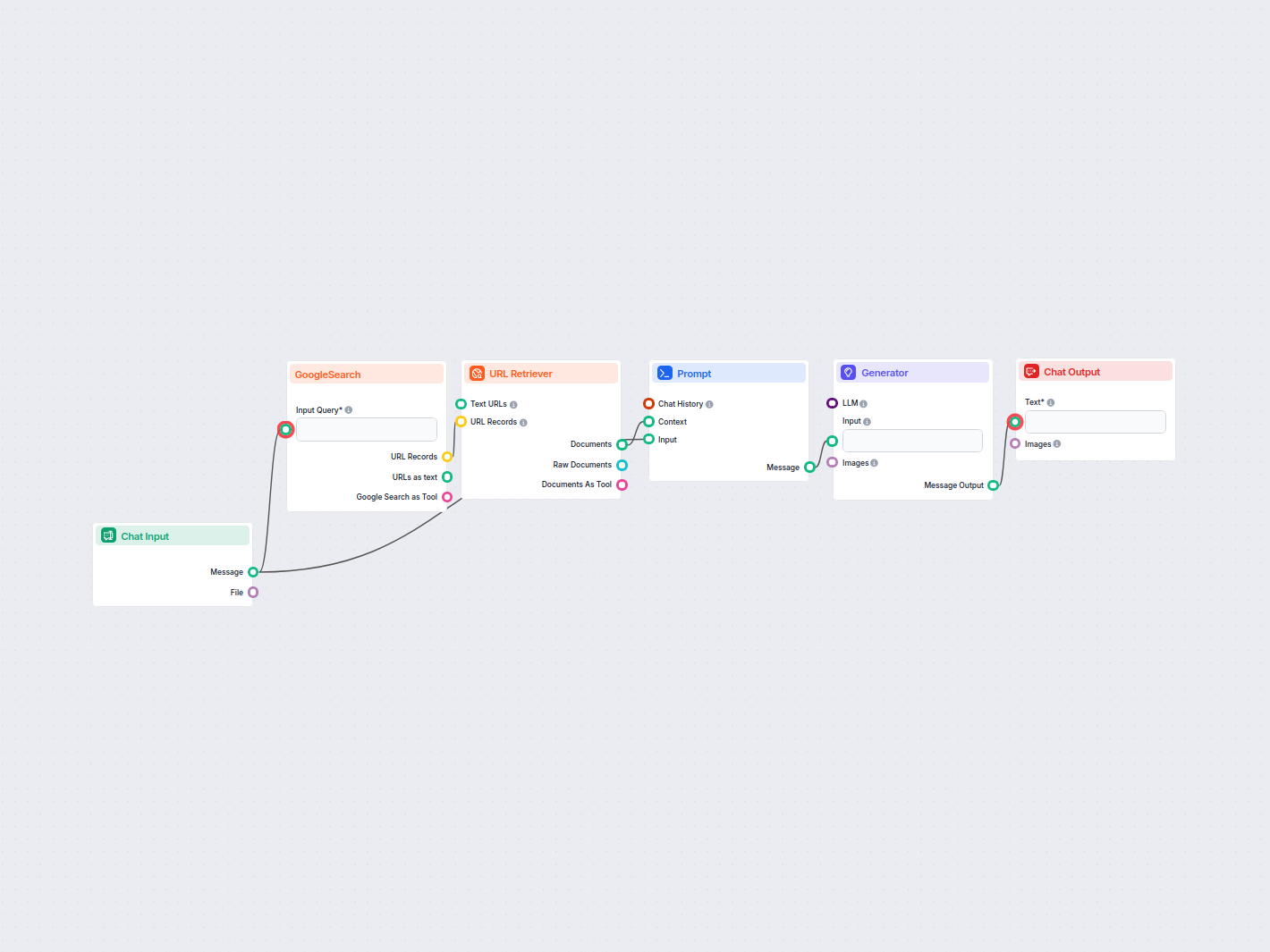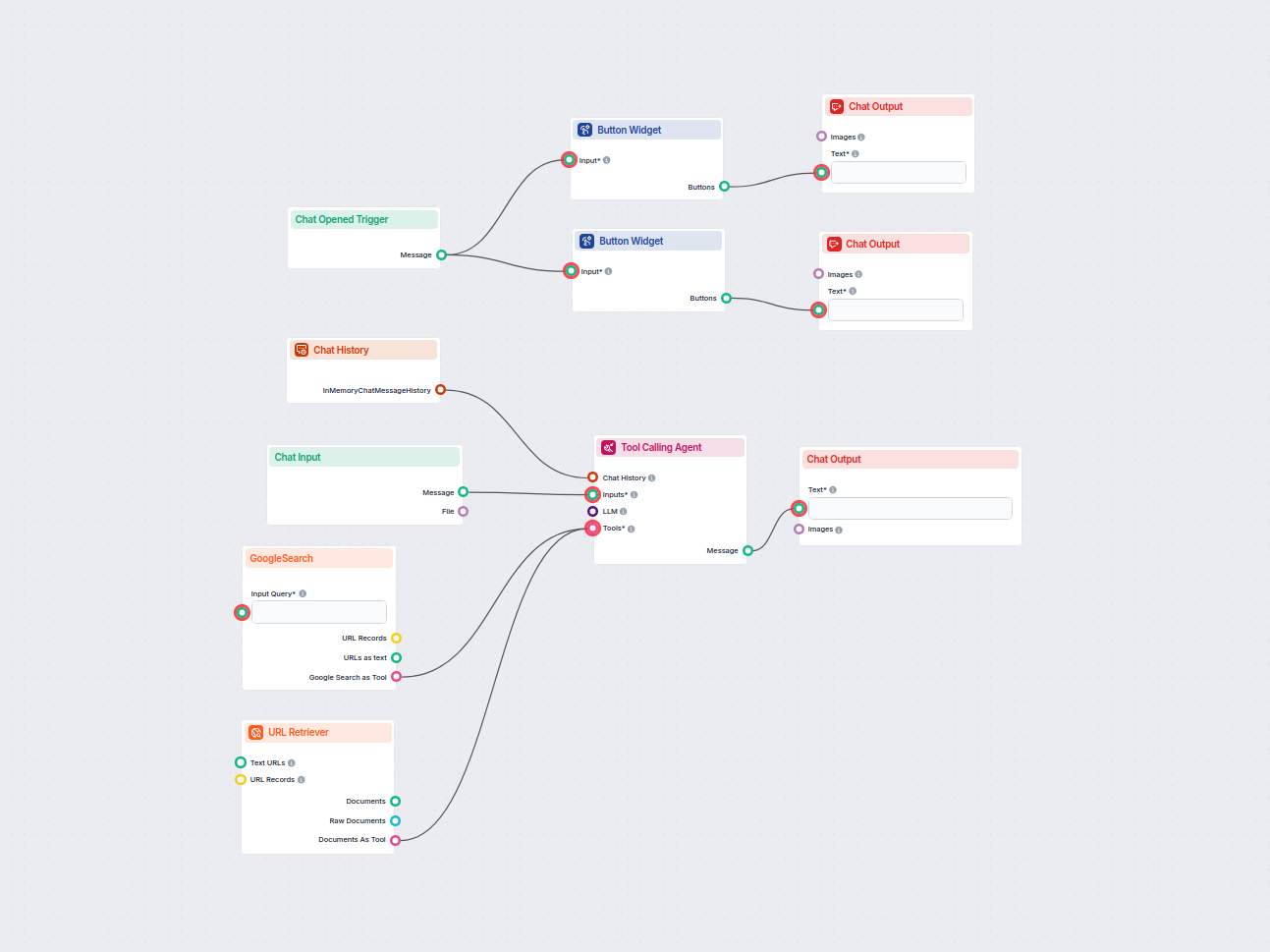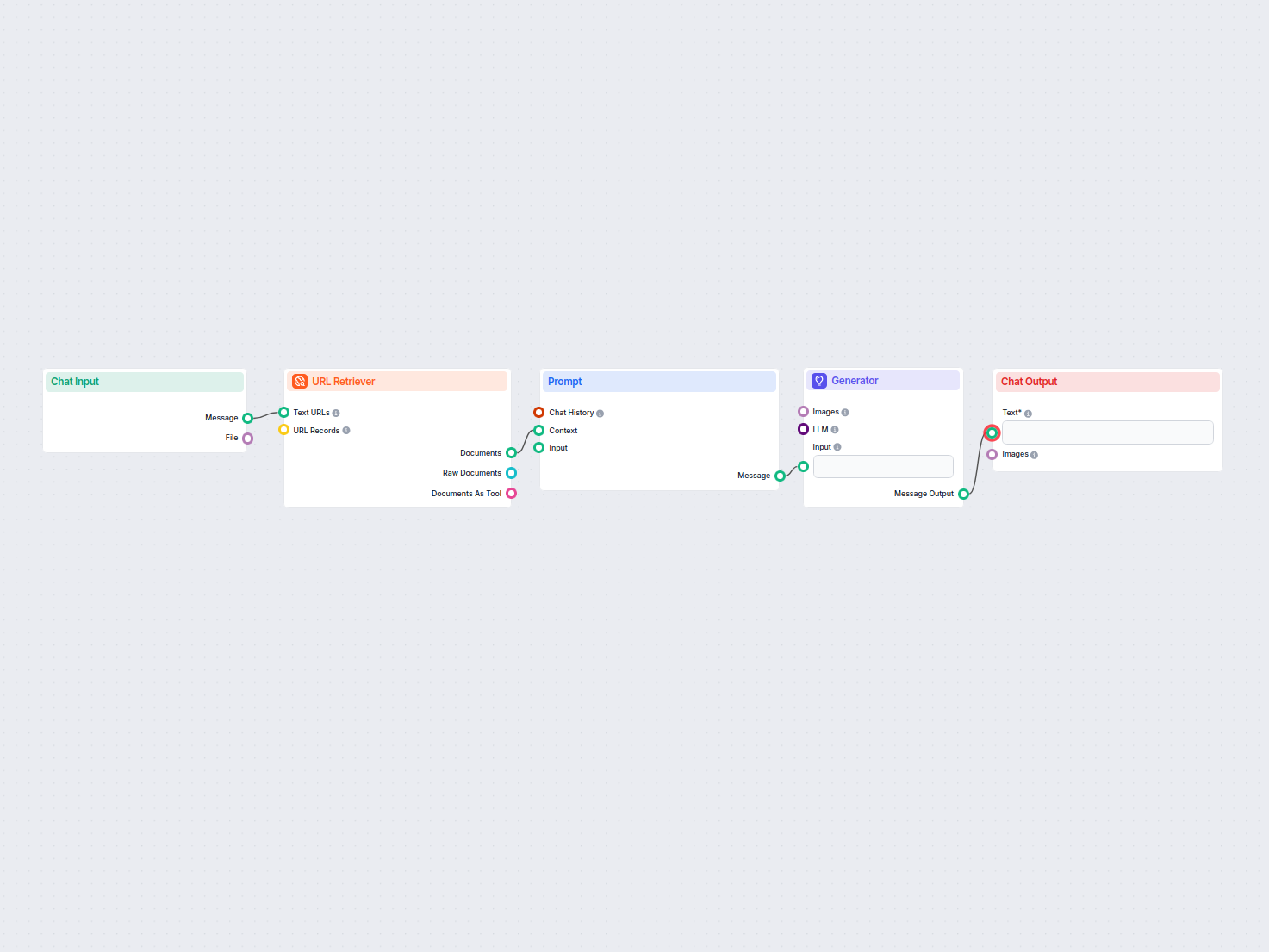Flow description
Purpose and benefits
The URLsLab FAQ Generator is an automated workflow designed to generate high-quality, SEO-friendly FAQ answers for websites, specifically for users of the UrlsLab WordPress plugin. Its core purpose is to take a user’s question as input and automatically produce a concise, accurate, and engaging FAQ answer based on relevant web content.
How the Workflow Operates
The process consists of several sequential steps, each handled by a dedicated node in the flow:
User Input
The workflow begins when a user submits a question via the chat interface. This question is the main input for the flow.
Google Search
The submitted question is used as a query for a Google Search node. This node retrieves a list of URLs and their associated content that are relevant to the user’s question.
Content Extraction
The URLs found in the search results are then passed to a URL Retriever node. This component fetches and compiles the actual content from each URL, transforming web pages into structured documents.
Prompt Preparation
Next, the workflow assembles a special prompt for an AI language model. This prompt includes:
- The user’s original question.
- The extracted web content (as “context”).
- Detailed instructions for the AI to write a focused, clear, and actionable FAQ answer. The instructions emphasize simplicity, accuracy, avoidance of filler phrases, and encourage including a call-to-action (like clicking a link) when relevant.
AI Generation
The prompt is sent to a text-generation node powered by an LLM (Large Language Model). The model generates a draft answer to the user’s question, relying on both the question and the contextual information from the web.
Output Display
Finally, the generated FAQ answer is displayed in the chat interface, ready for the user to review, use, or further edit.
Visual Overview
| Step | Component | Function |
|---|
| 1 | Chat Input | Accepts user question |
| 2 | Google Search | Finds relevant URLs for the question |
| 3 | URL Retriever | Extracts and composes content from found URLs |
| 4 | Prompt Template | Prepares LLM prompt with question + context |
| 5 | Generator (LLM) | Produces answer using AI language model |
| 6 | Chat Output | Presents answer to the user |
Why This Workflow is Useful
- Scalability: It automates the generation of precise FAQ answers for any number of questions, making it ideal for large websites or content teams.
- Efficiency: By leveraging real-time web content, it ensures answers are up-to-date and relevant, reducing manual research time.
- Quality Control: The prompt template enforces a clear, concise, and conversion-oriented writing style, resulting in answers that are both user- and SEO-friendly.
- Automation: The entire process, from question to answer, is performed automatically, minimizing the need for human intervention.
- Customization: The workflow can be adapted for different languages, industries, or FAQ styles by modifying the prompt instructions.
Potential Use Cases
- Content Teams: Rapidly generate FAQ sections for new products, services, or landing pages.
- SEO Specialists: Create rich, relevant FAQ content to improve search engine rankings and featured snippets.
- Support Teams: Automate responses to common user queries by integrating this flow with helpdesk systems.
- WordPress Sites: Seamlessly integrate with the UrlsLab plugin to enhance website FAQs with minimal effort.
In summary, the URLsLab FAQ Generator workflow streamlines the process of creating effective, engaging FAQ answers by combining web search, content extraction, and AI-driven text generation into a single, automated pipeline. This can significantly boost productivity and content quality for website owners and digital marketers.




